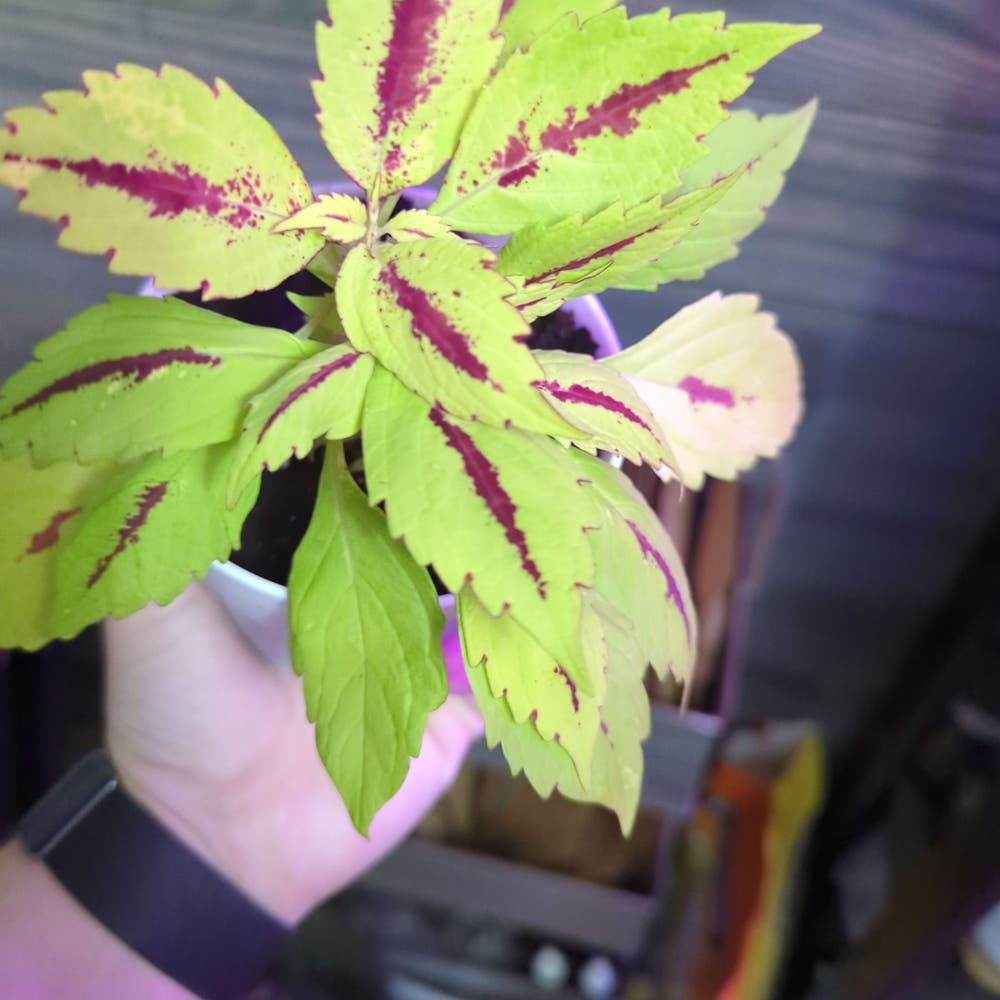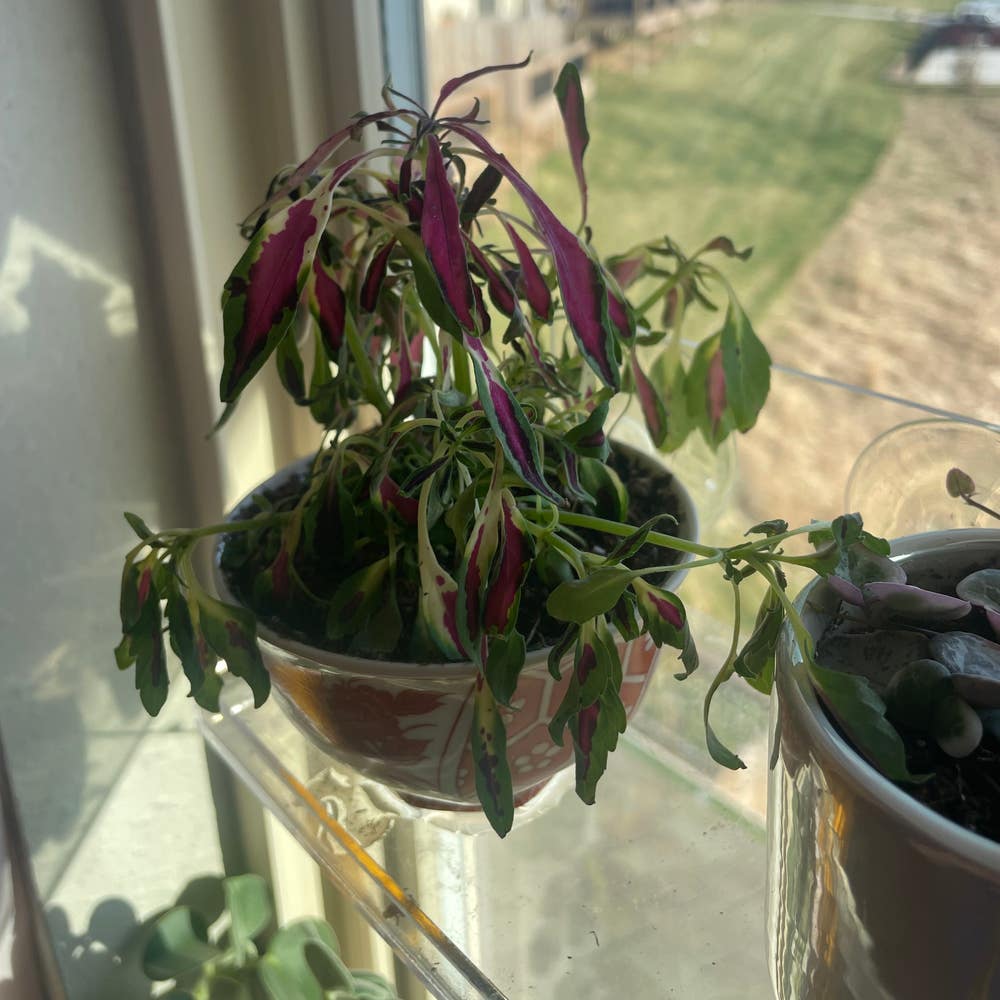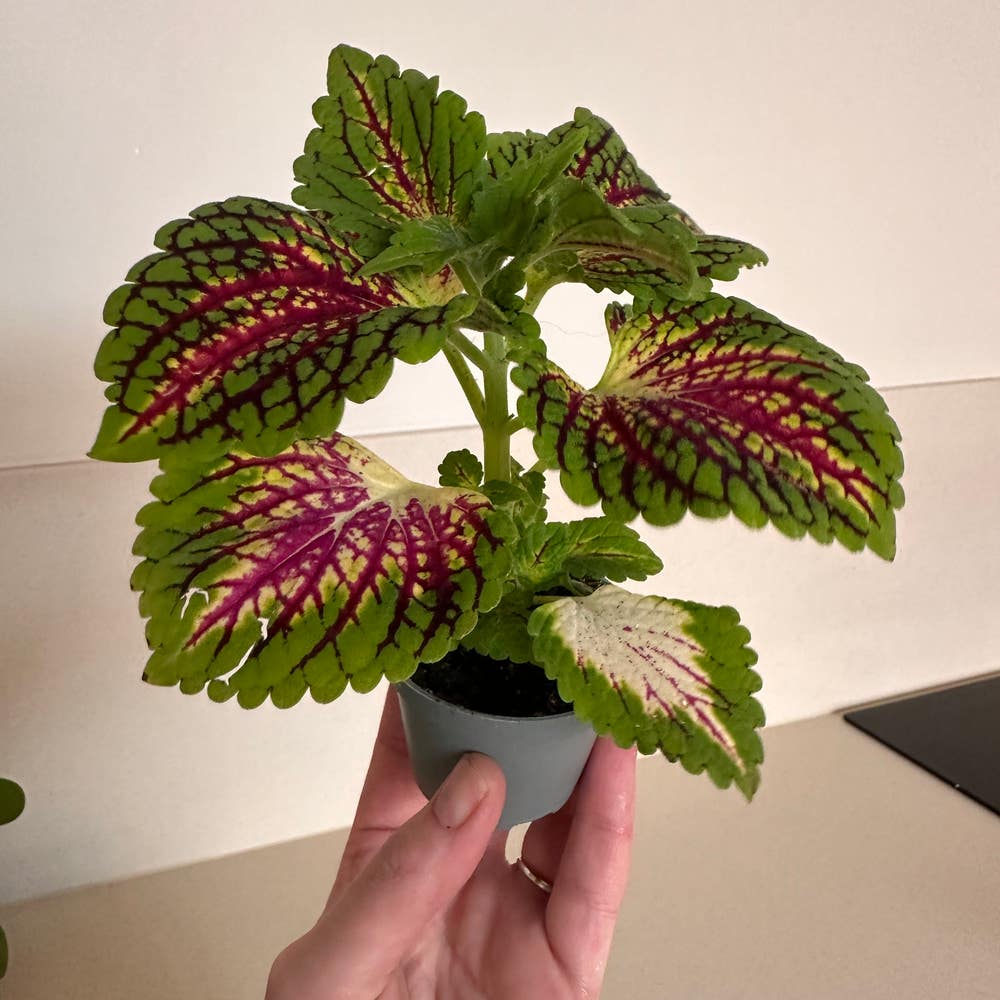Light Requirements For My Coleus By Season
Dec 16, 2023•14 min read
Maximize your Coleus's vibrancy and health with tailored lighting strategies for every season. 🌈🌿
- Spring and fall: Gradually adjust Coleus to changing light.
- Summer: Protect Coleus with partial shade and morning sun.
- Winter: Use south-facing windows or grow lights for brightness.
Light Needs in Spring
Spring ushers in new growth for Coleus, and getting the light conditions right is key. They crave moderate to bright, indirect sunlight during these months. Direct morning rays are a thumbs-up, but shield them from the harsh afternoon sun to avoid a crispy leaf fiasco.
🌱 Acclimating Indoor Coleus
When transitioning your indoor Coleus to the great outdoors, do it with a gradual tan approach. Start by placing them in a shaded area and slowly increase their exposure to sunlight over a week or two. This avoids the shock factor, keeping your leafy friends from throwing a fit.
💡 Indoor Light Adjustment
For the indoor plant gang, keep them near a window that gets plenty of morning light but is out of the line of fire from the midday sun. If your windows are more like light peepholes, consider a grow light to fake a sunnier spot. Just remember, too much artificial glow can turn your Coleus into a lanky, awkward teenager of a plant.
🕵️ Monitoring and Tweaking
Keep an eye on your Coleus like it's the season finale of your favorite show. If you notice any leaf bleaching or scorching, dial down the sun exposure. Conversely, if the colors seem as washed out as last year's jeans, it might be time to up their light diet.
Light Needs in Summer
Coleus plants are like the Goldilocks of the garden; they need conditions that are just right. Partial shade is their happy place in the summer to avoid the harsh midday sun that can bleach their vibrant leaves.
🌅 Morning Sun, Afternoon Shade
Position your Coleus to bask in the morning sunlight, which is gentler, and then shield it from the more intense afternoon rays. This can mean placing it under a tree or using a sheer curtain as a sunblock if it's indoors.
🌬 Keeping it Cool
The summer heat can be as unforgiving as a critic, so remember that Coleus appreciates a spot that stays cool. Use shade cloth or strategically placed plants to create a comfortable microclimate.
💧 Watering Wisdom
Watering in the morning sets your Coleus up for success, keeping it hydrated before the day's heat. Aim for the soil, not the leaves, to prevent any fungal encore performances.
☀️ Sun Tolerance Varieties
If your garden is a sun-soaked stage, opt for Coleus varieties that can handle the spotlight, like the Henna or Honey Crisp. They'll keep their color without a dramatic exit.
🌱 Acclimation is Key
When moving your Coleus outdoors, don't throw it into the deep end. Acclimate it gradually over a week or two to prevent a performance flop, aka leaf burn.
Remember, the goal is to keep your Coleus looking like it's ready for opening night all summer long.
Light Needs in Fall
As the days shorten in fall, your Coleus will crave more sun. Gradually increase their exposure to direct sunlight to compensate for the diminishing daylight.
🌞 Transitioning to Direct Sunlight
Start by placing your Coleus in a spot that receives a few hours of morning sun, which is gentler than the harsh afternoon rays. Monitor the plant's response; if the leaves show no signs of stress, such as wilting or fading, gradually increase the duration of sun exposure.
💡 Indoor Lighting Adjustments
For indoor Coleus, mimic the outdoor light shift. If you've been relying on a sun-drenched windowsill, it's time to get strategic. Rotate your plant to ensure all sides receive equal light, preventing lopsided growth. As natural light wanes, consider supplementing with artificial grow lights, setting them to mirror the natural daylight hours—typically 8-12 hours.
🕵️ Checking Light Intensity
Use the hand-shadow test to gauge light intensity. A soft shadow indicates bright indirect light, perfect for your Coleus. A sharp shadow? Too direct. No shadow at all suggests your plant is throwing a silent tantrum for more light.
🏡 Adapting to Your Environment
Remember, your home is unique. Light intensity can vary wildly based on window size, nearby structures, and even the season. Observe and adapt. If your Coleus could talk, it would probably tell you to move it closer to that sunny spot by the kitchen window.
Light Needs in Winter
In the winter months, Coleus craves bright, indirect light to maintain its vibrant foliage. With shorter days, your indoor Coleus might start to look a bit spindly or leggy, a clear sign it's light-starved.
🌞 Maximizing Natural Light
Position your Coleus near a south-facing window where it can soak up some weaker winter rays without the risk of leaf burn. Remember, direct sunlight is a no-no, but that golden indirect light is pure plant gold.
💡 Artificial Light Supplementation
If your abode is more like a cave than a greenhouse, artificial grow lights are your new best friends. Fluorescent or LED grow lights mimic the sun's spectrum, keeping your Coleus from getting all stretched out and weird. Set them up, turn them on, and watch your plant forget it's winter.
⏰ Light Timing
Timing is everything. Too much artificial light messes with your Coleus's head—or rather, its photoperiodic tendencies. Stick to natural daylight hours; a simple timer can help you mimic the sun's schedule without overdoing it.
💡 Light Intensity and Quality
Choose a grow light that doesn't just glow but grows. Look for bulbs that offer high spectral quality—the kind that plants crave. And intensity? Think bright but not blinding. Your Coleus isn't sunbathing; it's just trying to photosynthesize enough to stay perky.
💧 Humidity and Watering Adjustments
With less sunlight comes more responsibility. Keep an eye on soil moisture; overwatering is a winter sin. And since indoor heating can turn your place into the Sahara, consider a humidifier or pebble tray to keep the humidity just right.
🌱 Preventing Leggy Growth
Spot a leggy Coleus? More light might be the fix. But if you're already lighting it up like a Christmas tree, pruning might be the way to go. Snip off the spindly bits to encourage bushier growth and to keep things looking lush.
🚫 Safety First
If you've got pets that think Coleus is a salad, keep the plant out of reach. No one wants a trip to the vet as a winter bonus. And remember, while you're keeping your Coleus cozy, don't cozy it up to heaters or vents—that's just asking for trouble.
Impact of Light on Coleus Foliage, Growth, and Flowering
💡 Light Intensity and Coleus Foliage
Light intensity is like a dial on the color vibrancy of Coleus leaves. Too much sun, and you risk the fading or discoloration of those eye-popping hues. However, under the right conditions, light can enhance the richness and variegation of the foliage. It's a balancing act; think of it as tuning your TV to get the colors just right—too much saturation and the picture burns out, too little and it's washed out.
🌅 Duration of Light Exposure
Day length isn't just a countdown to your next Netflix binge; it's crucial for Coleus too. These plants need their beauty sleep, so while extending light exposure can boost their food production, overdoing it is a no-go. Aim for no more than 16 hours of light per day to avoid turning your Coleus into a crispy critter.
💡 Light and Flowering
If you're hoping for flowers, light is your wingman. Coleus flowering is a bit of a diva and demands the spotlight. Without enough light, don't expect a floral show. But remember, Coleus is primarily grown for its foliage, so if flowers do pop up, feel free to pinch them off to keep those leaves the star of the show.
🎨 Anthocyanin and Temperature
Anthocyanin, the pigment that gives some Coleus their red swagger, gets fussy with light and temperature. Too much light can bleach it out, but just enough can make those reds pop. And if you throw in a chill in the air, some Coleus varieties will flaunt even more color. It's like they're putting on their best dress for the cold.
Real-World Observations
In the wild world of gardening, not all Coleus are created equal. Some are sunbathers, while others are shade-seekers. Sun-tolerant varieties can handle a day at the beach, while others will need a parasol to avoid a sunburn. Indoors, you're the puppet master of light, and you can choose any Coleus variety to dance under your controlled rays.
Importance of Light for Coleus Growth and Flowering
In the vibrant world of Coleus, ⭐️ light is the maestro, orchestrating a symphony of growth and color. Without adequate light, your Coleus might as well be playing an unplugged electric guitar—visually unimpressive and lacking vibrancy.
⚡️ Light: The Growth Conductor
Coleus plants crave light like morning coffee enthusiasts crave their first cup. It's the fuel that powers their growth engines. Too little light, and your Coleus's leaves will throw a colorless tantrum, while too much can lead to a foliage sunburn. It's a delicate balance, a dance between sun and shade that varies with the rhythm of the seasons.
💐 Flowering: A Light-Triggered Spectacle
While Coleus flowers aren't the headliners of the show, proper light can prompt these supporting acts to make an appearance. It's not just about brightness but the duration of light exposure that cues these plants to flower. Think of it as nature's timer, signaling when it's showtime for blooms.
Indoor vs. Outdoor Light Dynamics
Indoors, your Coleus relies on you to mimic the sun's itinerary. Bright, indirect light is the golden ticket to lush, indoor foliage. Outdoors, the sun's natural cycle does the heavy lifting, but you'll need to play bouncer, ensuring your Coleus isn't partying too hard under the midday sun.
Sun-Loving and Shade-Hugging Varieties
Coleus varieties are like different personalities at a party—some love the spotlight, thriving in full sun, while others prefer the cool mystery of the shade. The Kong Mosaic revels in the shade, while the Henna variety can soak up the sun without breaking a sweat.
Light Quality: Beyond Intensity
It's not just about how much light, but also the kind of light. Red and blue wavelengths are like the bass and treble in music, essential for different aspects of plant growth. Red light encourages flowering and compact growth, while blue light is the maestro of leaf color and overall plant vigor.
Artificial Lighting: The Indoor Sun
When the sun clocks out for the day or during the gloomy winter months, artificial grow lights step in. They're the night shift workers that keep your Coleus in tip-top shape, preventing the dreaded leggy growth that comes from light deprivation.
Real Talk: Light is Everything
Let's cut to the chase—without proper light, your Coleus is just another plant. With it, it transforms into a kaleidoscope of living color, a testament to the magic that happens when you hit the sweet spot of light exposure. So, keep an eye on that light; it's the secret sauce to a Coleus that truly rocks your garden or indoor space.
Adapting Light Conditions for Indoor and Outdoor Coleus
🌞 Transitioning Outdoor Coleus
Acclimatization is key when transitioning your outdoor Coleus from shade to sun. Start by introducing your plant to brighter spots for short periods each day, gradually increasing exposure. This avoids the shock and awe campaign that can lead to a sad, sunburned Coleus. Remember, no plant likes a sunburn, not even the sun-worshipping varieties.
💡 Indoor Coleus Light Adaptation
Indoor Coleus need a steady light source, mimicking the gentle morning sun. Place them near a window that gets indirect light, and rotate the pot regularly for even growth. As seasons change, so should your plant's position. Keep an eye out for leggy stems or faded leaves, which scream for more light.
💡 Maintaining Optimal Light Exposure
For indoor plants, artificial grow lights can be a game-changer during those gloomy months. LED or fluorescent? Check out our article on the 7 Best Grow Lights for Indoor Plants in 2023. And for outdoor Coleus, a simple trick is to use larger containers to keep the soil cool and the plant hydrated under the scorching sun.
🌞 Real Talk on Light Needs
Coleus are like Goldilocks, not too much sun, not too much shade. They crave that 'just right' spot. If your Coleus could talk, it would probably ask for a morning sunbath followed by an afternoon in the shade, sipping a cool drink (of water, obviously).
Factors Affecting Light Requirements
In the dynamic world of Coleus cultivation, light is a diva, and its requirements change with the scenery. Let's break down the factors that demand your attention.
🌍 Geographic Location and Climate
Your Coleus doesn't need a weather app to know what's up. Geographic location dictates the amount of sunlight your plant will bask in or sulk under. In regions closer to the equator, Coleus can enjoy a sunbath more often, but they'll need a parasol to prevent a sunburn. Conversely, in higher latitudes, the sun plays hard to get, especially during winter, so you might need to set up a light date with grow lights.
🌱 Microclimates: Your Garden's Little Secrets
Even within your garden, there are microclimates—those sneaky little pockets where the sun might linger a bit longer or where shade is the permanent guest. Observe these spots; they're crucial in deciding whether your Coleus will flaunt vibrant patterns or wear a dull green.
🏠 Container Size and Placement: The Real Estate of Light
The size and placement of your Coleus's pot are like choosing an apartment. Go too small, and your plant's growth is cramped. Place it in a shady corner, and it's like living in a basement—expect pale leaves. A spacious pot in a well-lit spot? Now that's penthouse living for your Coleus, with plenty of room to show off its colorful foliage.
🏙️ Windows and Obstacles: The Urban Jungle
In the concrete jungle, your windows are the gatekeepers of light. Large, unobstructed windows are like open floodgates for sunlight, while small or shaded ones are more like a trickle. Nearby buildings, trees, or even your own curtains can cast a shadow over your Coleus's light dreams. Keep these in mind when playing interior decorator with your plants.
Remember, Coleus care is not just about keeping them alive; it's about letting them live in Technicolor.
Troubleshooting Light-Related Issues
💡 Identifying Common Light-Related Problems
Leaf burn or poor growth can plague your Coleus if the light isn't just right. If leaves look bleached, your plant is likely sunbathing a bit too much. Conversely, dull and flimsy leaves scream for more sunshine.
💡 Tips for Adjusting Light Exposure
To combat leaf scorch, relocate your Coleus to a shadier retreat. Think dappled sunlight, perhaps beneath a tree or an awning. For those Coleus craving more rays, inch them closer to the light, but do it gradually to avoid a full-blown light shock.
💡 Addressing Specific Issues
Got brown tips? It's a cry for humidity. Set up a pebble tray with water or get mist-happy to up the ante on moisture. If you're dealing with leggy stems, it's a telltale sign your Coleus is playing hide and seek with the light. Move it to a brighter spot, stat.
💡 Acclimating to Seasonal Changes
As the seasons shift, so should your Coleus's spot. Winter means maximizing that scarce sunlight, possibly with a grow light's help. Come spring, ease your plant back into the great outdoors, avoiding direct sunlight ambushes.
💡 Quick Fixes for Immediate Issues
If you spot aphids or spider mites, show no mercy. A blast of water or insecticidal soap should send pests packing. And if your Coleus is suddenly looking like a goner, check the thermometer; these guys despise the cold.
💡 Proactive Measures
Prevention is the best cure. Monitor your plant's light diet closely and adjust as needed. Remember, your Coleus's vibrant wardrobe depends on it. Keep it colorful, keep it thriving, and above all, keep it in the right light.





